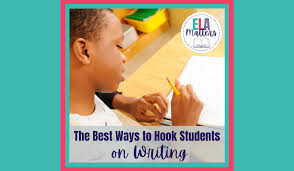When I started my career as a teacher, I made a lot of assumptions about students’ ability to write. After many years in the classroom, I’ve learned that teaching kids to write well is no small task. What I now understand is that we should be intentional about our instruction and lessons.
Nurturing good writers takes time, and there are no shortcuts on the road to success.
I’ve discovered four ways you can hook your students on writing: teach the importance of writing, guide students in finding their voice, help them understand the conventions of the English language, and keep them engaged.
Teach the Purpose and Importance of Writing
Don’t skip teaching the importance of writing early on. This is where you will influence buy-in from students and help them see the vital role writing plays in the real world. Begin with a lesson on the writing process and let students brainstorm instances where good writing and communication are necessary. Bring in examples of mistakes in writing from social media and let them find the errors. Discuss how the mistakes impacted the writer’s message. When students better understand these ideas, they are more likely to produce better writing themselves.
Give Students Tools to Succeed
At the beginning of the year, students create a section in their binder labeled Writer’s Tools. I use references and tools every day in my work just like other professionals, so why wouldn’t I provide students with these as well? I hand out a cheat sheet for grammar, usage, and mechanics and share an expanded digital writer’s tools notebook because my students will also be using their laptops in class to write. Anchor charts, mentor text, and word walls are other great tools for students to use during the writing process. I like to create a display with these resources, which makes a perfect year-long bulletin board.

Ask Them to Make Connections
“Write to Connect” is a simple strategy I use to guide students in finding their voice. It’s a sneaky way to get kids thinking, writing, and connecting to the text before introducing the selection. One example is an assignment from my short story unit for Gary Soto’s “Seventh Grade.” Before we read, I ask students to write about a time when they stretched the truth to impress someone. The main character in the story pretends to know how to speak French to impress a girl he likes. Later, I have them use their work as a springboard to develop a more organized writing piece.
Provide Picture Prompts
One of my students’ favorite activities is writing with picture prompts. You can find and collect images that will interest and engage your scholars by doing a quick internet search. Next, create a Google Form that includes the image, add several questions about the picture, and then state the prompt. Remember to add any requirements to your instructions as well. If your students are anything like mine, they will beg for more!
What strategies are you using to encourage and motivate students to write? I’d love to hear what works in your classroom. Message me on Instagram or tag me in your social media posts. Look for more great posts about writing on the ELA Matters blog, too!

